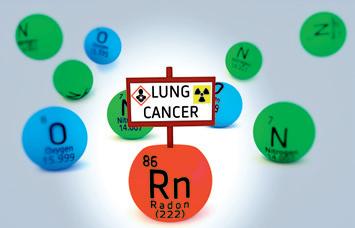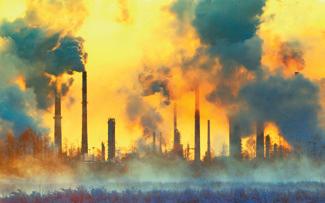
2 minute read
What causes NSCLC?
Smoking is the biggest risk factor for developing lung cancer. However, there are other risk factors that can also increase the chances of developing lung cancer. It is important to remember that having a risk factor increases the risk of cancer developing but it does not mean that you will definitely get cancer. Likewise, not having a risk factor does not mean that you definitely won’t get cancer.
Smoking
Advertisement
Tobacco smoking is the leading cause of lung cancer. In Europe, it is responsible for 90% of cases in men and 80% of cases in women (Novello et al., 2016). The number of years that a person has been a smoker is more important than the number of cigarettes smoked per day; therefore, giving up smoking at any age can reduce the risk of developing lung cancer more than cutting down on the number of cigarettes smoked per day.
Passive smoking
Passive smoking, also referred to as ‘second-hand smoke’ or ‘environmental tobacco smoke’, increases the risk of developing NSCLC, but to a lesser extent than if you are a smoker.

Radon
Radon is a radioactive gas that is produced during the breakdown of naturally-occurring uranium in soil and rocks, particularly granite. It can pass through from the ground into homes and buildings. Exposure to excessive levels of radon is thought to be a significant causative factor in patients with lung cancer who have never smoked. This may be particularly relevant for underground miners who may be exposed to high levels of radon if the mines in which they work are in a particular geographical region.

Genetic susceptibility
It is thought that some people may be more likely to develop lung cancer based on their genetic makeup (Bailey-Wilson et al., 2004) . Having a family history of lung cancer, or other types of cancer, increases the risk of developing lung cancer to some degree. In people who are genetically predisposed to lung cancer, smoking further increases the risk.

Household and environmental pollutants
Other factors described as risk factors for the development of NSCLC include exposure to asbestos and arsenic. There is evidence that lung cancer rates are higher in cities than in rural areas, although factors other than outdoor air pollution may be responsible for this pattern. It has also been suggested that indoor air pollution from use of coalfuelled stoves may be a factor in some countries (Planchard et al., 2018) . For example, in China there is an increased rate of lung cancer in women, despite the fact that a lower proportion of women are smokers in China compared with some European countries.

Recent results from a study using computed tomography (CT) to screen for lung cancer reported a 26% reduction in lung cancer deaths after 10 years of follow-up in men who had no symptoms of lung cancer but who were considered to be at high risk of developing the disease (De Koning et al., 2018). However, at the present time, large-scale screening for NSCLC is not a routine procedure in people who are at a higher risk of developing the disease based on the above risk factors.





